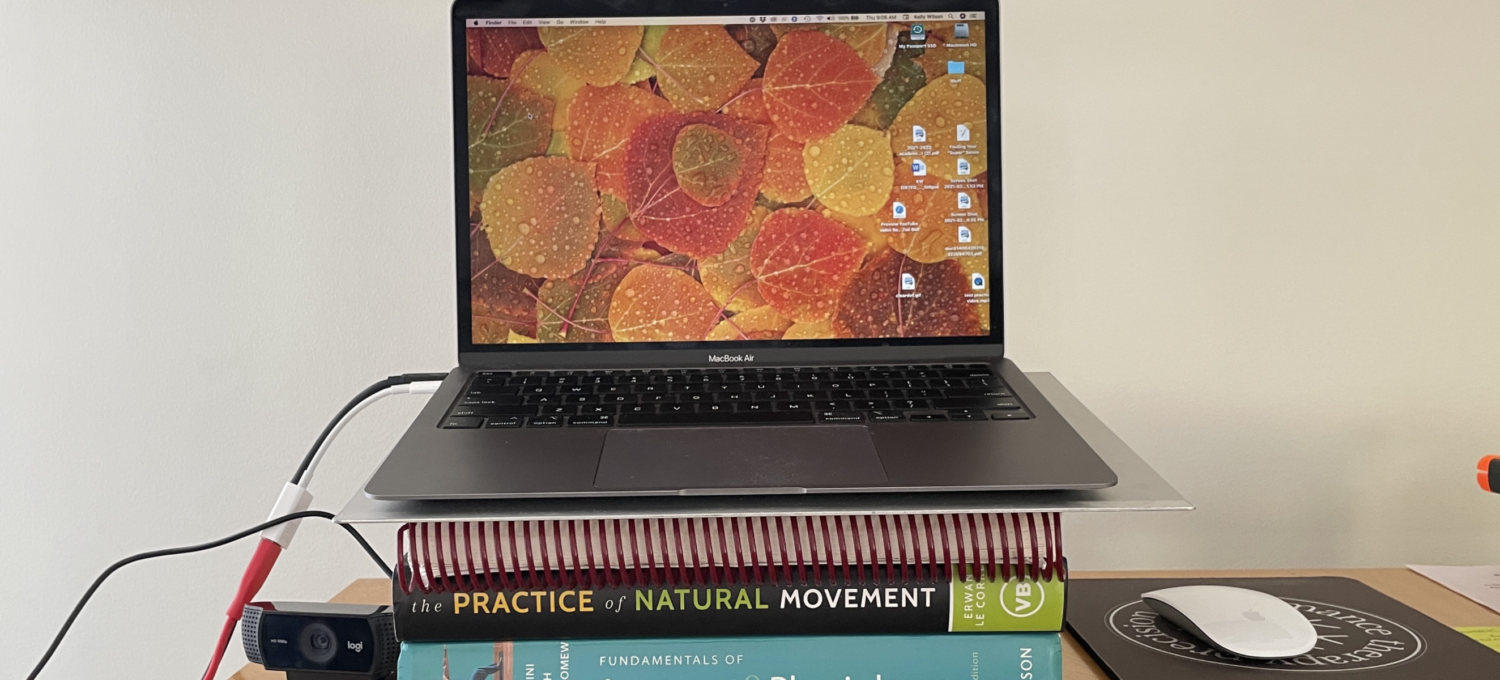Zoom fatigue is a real thing! My college students are doing the majority of their classes and lessons via Zoom from their dorm rooms. They are practicing in their dorm rooms. They are getting their food from the available on-campus options and bringing it back to the same dorm rooms. They are tired of being in the same space, looking at the same screen all day long. And they hurt—low back pain, neck pain, headaches, lack of ability to focus.
What can be changed?
Much of this situation is out of their control. They cannot change the circumstances and this way of learning will not be permanent. What can they change in a dorm room with only items that they have with them? What different choices can they make to help themselves feel better physically and emotionally? Crawling back under the covers and sleeping all day, while restorative, is not a realistic option. How can they build more movement into their day? Even in this type of restrictive environment, they all have the power to choose how they are going to move through their day.
The experiment
Here’s what I asked them to do: find at least three different ways to alter your set up for Zooming and don’t use the same one for two classes a row. They also had to track how many hours they spent sitting over the course of three days. The average for the class was around 13 hours per day! The problem is that they are sitting in the same less-than-ideal dorm room chair all day long. It’s not sitting by itself—it’s sitting the same way all the time. If they were standing all day in the same way, they would also hurt. Just ask anyone who has worked as a cashier in a grocery store.
The results
Here are some of the ideas they came up with: sit on the bed, sit on the floor, build a standing desk with boxes and text books, jam a bunch of paper towels under the chair legs to make it not rock (they are curved like rocking chairs in some of the dorms), pad the back of the chair with a pillow, build up the indentation in the bottom of the chair with a towel, sit on the couch, stand up at the kitchen counter, balance the laptop on the dresser drawer to make a standing version, put books under the corners of the desk to raise the whole thing, use the coffee table and sit on the floor. They are amazingly creative young people and they came up with so many ideas! What they found was they felt so much better at the end of the day, they were shocked. Sitting on the floor in particular was a fan favorite. I wasn’t surprised by that. Humans tend to change position much more often on the floor because we get uncomfortable. Think about how toddlers move when they’re sitting on the floor. Constant movement, right? That’s what it all about – movement and trying to get as much movement as possible, especially when your school/work environment is fairly sedentary.
Take away ideas
1) For whatever task you’re doing, try to find as many different ways as you possibly can to accomplish that task and rotate through them. As flutists, we can practice standing up, sitting on a chair, sitting on a piano bench. If you’re on a phone call for a meeting, you can pace around your office or living room, walk outside, sit in your desk chair, or sit on the floor.
2) Getting lots of little chunks of movement into the day really adds up. You can use the restroom on the third floor instead of the second floor. You can take the long way back to the dorm from the dining hall. You can refill your water bottle at the water bottle station that’s farthest away from where you are. You can park a long way from the entrance to the grocery store and walk a little bit more.
Even in the absence of a global pandemic, we will continue to find ourselves in situations where our environment is restricted with limited ability to make any changes. What we do have, though, is the ability to choose how we move through, in and around these obstacles in that environment. Movement matters and it’s a choice.

